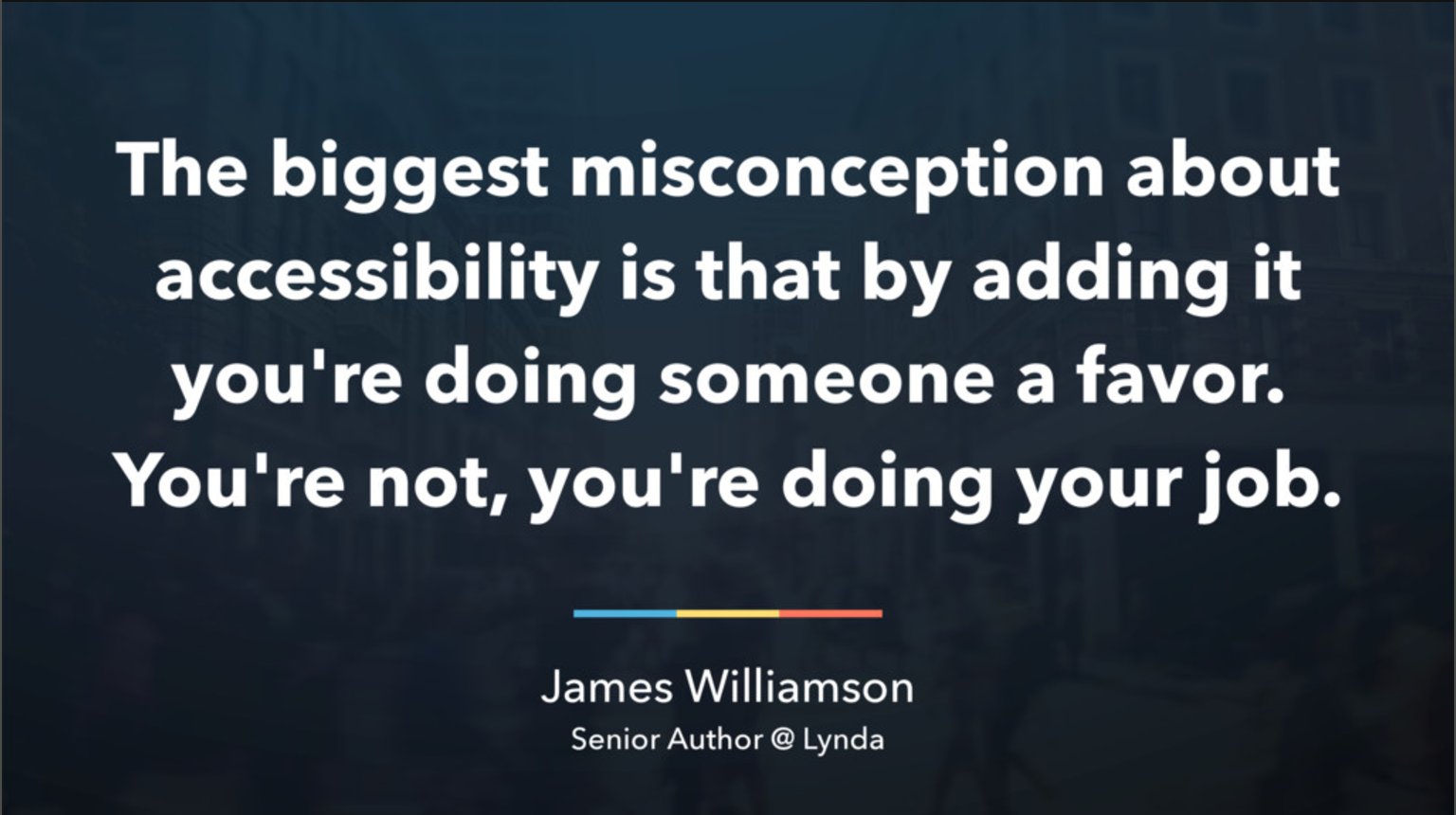- Disabilities are not always permanent.
- Accessible systems benefit more than just the profoundly disabled.
- Many people who are formally disabled don’t self-identify as being disabled.
- We cannot detect a person’s disabilities through the web browser.
- Until our products are accessible, they are not complete.
Disabilities are not always permanent.
A person who breaks their eyeglasses is temporarily disabled (to whatever extent their vision is poor) until the glasses are repaired or replaced. A person who breaks their arm has a temporary motor impairment. A person being treated for cancer with chemotherapy may experience cognitive impairments. A car accident may cause vestibular disorders. There’s a strong chance that at some point in your life you will be temporarily or permanently disabled — and if you wear glasses or contacts, you already are.
Accessible systems benefit more than just the profoundly disabled.
A parent holding a grabby one-year-old while trying to use a smartphone has to battle distraction, the ability to only use one hand, and multiple other issues to use the phone. Work in a noisy coffee shop, a train going through a tunnel, or any number of other location-based or environmental issues mirror accessibility issues. A broken touchscreen or monitor is very similar to a visual impairment in usability terms. The Game Developers Conference slide on Twitter referenced in the image below says it all: 60% of able-bodied people use accessible features when they are made available.

Many people who are formally disabled don’t self-identify as being disabled.
This is in part because they’re capable of doing most things and don’t see themselves as being at a signficant disadvantage, and in part because ableism in most societies adds a significant stigma to disability.
We cannot detect a person’s disabilities through the web browser.
We cannot detect screen readers, monitor size or zoom levels, hearing aids, special keyboards or hardware to navigate a page, or any other accessibility features with reliability. We have to rely on estimates from disability communities for high-level estimates of volumes of users.
Until our products are accessible, they are not complete.
A website or software product that serves only a subset of our audience based on their physical state of being is not considered usable; to be usable, all of our audience must be able to use it. The World Health Organization defines disability as follows (emphasis added):
Disabilities is an umbrella term, covering impairments, activity limitations, and participation restrictions. An impairment is a problem in body function or structure; an activity limitation is a difficulty encountered by an individual in executing a task or action; while a participation restriction is a problem experienced by an individual in involvement in life situations. Thus disability is a complex phenomenon, reflecting an interaction between features of a person’s body and features of the society in which he or she lives.
Where we, as creators, define the environment and features of the society in which our product users and customers live, we are responsible to erase and mitigate the difficulties that arise during interactions between their bodies and our products.

